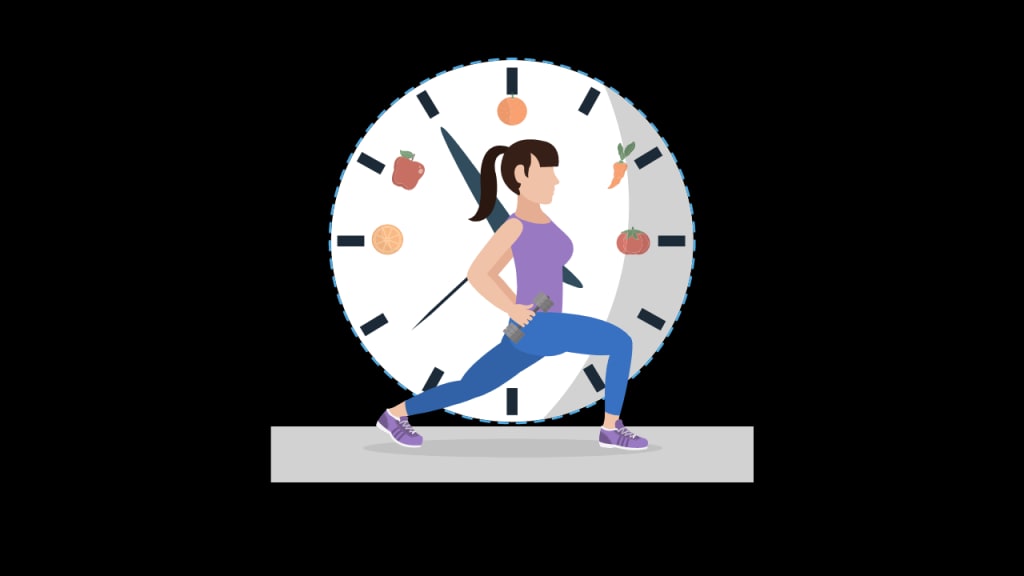1O Simple Steps To Quickly Master Any Habit.
A lot of people find it difficult to get into a routine and make the changes that are necessary for success.

Do you struggle with a specific habit that you’d like to master? Want to eat healthier, exercise more, or rest every day? Even if you never stopped to consider it before, it’s surprisingly easy to develop a new habit and it doesn’t require any effort or willpower.
In fact, the only thing required of you is being curious about what motivates and triggers your bad habits. Once you understand this motivation that which results in your bad habits all the power is in your hands. You can shape them into something different just by understanding how they work.
1. Identify the Habit
First, you need to figure out what the habit is that you want to shape into a positive one. For example, if you want to eat healthier, identify why this particular habit is important and what foods you really like or dislike. If it’s exercising regularly, figure out which types of exercises you do now and do more of them. Do you rest enough? Identify what’s important (like getting rest) and then continue reading.
2. Identify the Trigger
The trigger is something that makes you perform the habit. For example, if you want to eat healthier, what are your favorite foods? What are you hungry for now? If it’s exercising regularly or getting more rest, what makes you feel tired and need a rest? You should ask yourself these questions daily and immediately find out why these triggers occur. What’s the difference between a trigger and a motivation? The trigger is what prompts the habit to occur. A motivation is how beneficial the reward is to your mind and body. Discover both of these for yourself.
3. Isolate the Reward
Next, once you’ve identified your triggers, you need to figure out what the reward is for you. It could be eating something delicious, a hot shower after exercising or a comfortable bed after a long day at work.
Once you figure this out, act on it and make sure you get this rewards every time. If a hot shower is your reward when exercising regularly, then make sure that each time you exercise, you get that hot shower afterwards.
You should get used to hearing yourself say something like “Well I can’t take that hot shower right now because I just worked out... but I can take it later.”
4. Identify the Obstacle
Now that you’ve isolated the rewards and the triggers, look for any obstacles or barriers that prevent you from implementing the rewards.
If you love eating a delicious meal, why not eat it every night at home? If sleeping in and relaxing is your reward for being productive, why don’t you move your office to home?
So instead of looking at these obstacles as obstacles and feeling frustrated with them, look at it as an opportunity to change something and use it to your advantage.
5. Change the Habit
Once you’ve identified all of these elements, change them however you can. Maybe your trigger is going out to eat because you feel like this will make time go by faster while working late. Your reward is having a delicious meal. Your obstacle is the time spent going to the restaurant and driving back after dinner.
There are many ways to change this habit. You can have food ordered in, or have all your meals cooked and ready at home, so you can work later in peace with your dinner already served. Maybe you’re too tired to go out every night, but you’re motivated enough by the delicious food to stay up later and make time for it. So use this motivation to help you stay up late and make time for it.
6. Repeat
After you’ve changed these habits around, change them again. You should try to change the habit multiple times a day each time you perform it. Once you’ve completed this, make sure to continue with any habit that still occurs after several attempts.
If a habit still happens repeatedly, then there may be a problem with this habit or your motivation.
On the other hand, if the same situation occurs but results in different outcomes and you are happy with it, then this is how your habits will feel naturally over time and there’s no need to try and force anything.
7. Continue to Learn
Learn more about where your motivation comes from. The only way you can change the habit and understand the connection is if you’ve identified it and changed it on at least a few occasions.
If the motivation changes, then your habit has probably been changed at some point as well. It may take a lot of repetition to achieve this, but once you do, your future habits will be easier because you already know how they work. Let’s say that instead of making good choices for yourself and for others all of the time, you only make good choices once every two months.
If a situation like this happens again, yet another connection between behavior and motivation is discovered. You can then use the old method to discover how it works, and change the new situation as well. It’s a never-ending process but one that’s extremely rewarding.
8. Learn From Others
In learning about your behavior and motivations, you can learn just as much from other people about what motivates them.
Finding out more about other people’s habits should help you mold your own as well. For example, if you find out that someone else really likes to rest, then you can make sure that you rest more too.
Perhaps after a long day at work or school, resting becomes the most important thing for both of you. This can lead to a healthy balance and help you feel happy on a consistent basis.
9. Celebrate Successes
Make sure to celebrate every time you do something great. This will help cement the habit into your mind. For example, if you’re exercising regularly and are feeling stronger, make sure that you acknowledge this achievement by saying “I’ve been exercising regularly lately.
I feel really good!” This will give you positive feedback in order to keep yourself moving forward in this lifestyle choice, while also giving you an opportunity to learn from it. You can learn what you’re doing right, and can try to replicate it.
10. Avoid Setbacks and Relapses
Every time a setback occurs, there should be a relapse back into old habits and routines. Learn from these setbacks before they occur.
For example, let’s say that you wake up in the morning and are in a rush to go to work. You get there and realize that you forgot your lunch at home.
You don’t have time to grab anything to eat, and you have no food left in the house because you’ve been too busy.
After work, you get home exhausted and decide that it’s too late and your body is too tired after a long day of work for any activity. You eat a late dinner and fall quickly asleep.
Conclusion
This basic lifestyle change can happen in a very short period of time with just a few key points. Becoming more active is extremely important for getting healthy and feeling good. It’s also something we all need to be doing almost every day... or else. With good habits and routines, you will always be able to maintain this habit and create the new healthy, happy lifestyle that you deserve.
About the Creator
BingBingMoney
Welcome to our blog... This is where we will find news, information, tips, tricks and advice on how to make your life better. We hope you enjoy our blog as much as we do.






Comments
There are no comments for this story
Be the first to respond and start the conversation.